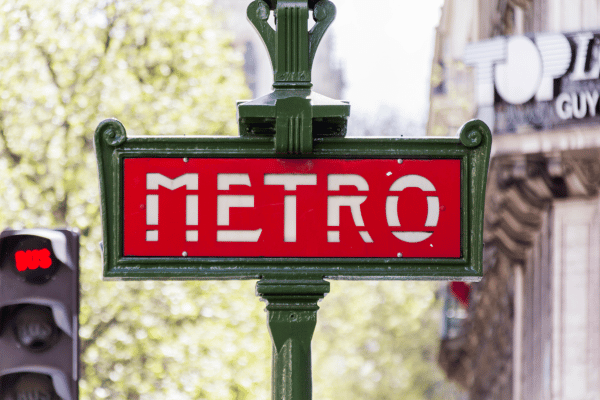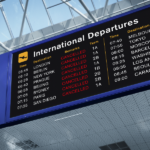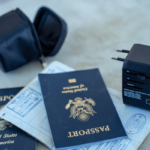Planning a trip to France? Navigating the vast network of French public transportation can seem daunting at first. However, with the right guidance, you’ll be moving through the Metro, buses, and trams with the ease of a local. Our guide is here to equip you with essential tips and tricks to navigate French public transportation efficiently. Let’s embark on this journey together and transform your travel experience in France.
Introduction to French Public Transportation

The French public transportation system is a lifeline for both locals and tourists alike. From the bustling metros of Paris to the quaint tramways in Bordeaux, the network is extensive. It’s designed to connect you with every nook and cranny of the country. Initially, the complexity might seem overwhelming. Yet, with each journey, you’ll find yourself getting more acquainted with the routes and schedules.
Embarking on your first ride? Begin with understanding the basics. The system is divided into metros, buses, trams, and regional trains. Each serves its unique purpose, facilitating movement across cities and countryside. Signage and announcements are predominantly in French, yet they’re intuitive. Look for maps and schedules at stations. They’re your best allies. Furthermore, digital apps have made it simpler to navigate French public transportation, offering real-time updates.
Among the myriad of options, the Paris Metro stands out as a quintessential experience for many. It’s not just a means to an end but a journey through the heart of French culture and history. Riding the Metro is more than commuting; it’s about witnessing the vibrant life of the city from within. As you become more familiar with the system, you’ll find it easier to explore France’s beauty, far beyond the typical tourist paths.
Understanding the Paris Metro
Diving into the Paris Metro system is akin to discovering a new world beneath the city’s historic streets. This network is the backbone of Parisian public transport, connecting distant neighborhoods with the city’s heart. First-time users might find its complexity challenging, but fear not. The key lies in familiarizing yourself with the color-coded lines and station names, which are your guide through this underground labyrinth.
Moreover, navigating the Paris Metro requires a bit of preparation. Before setting foot in a station, download one of the many available apps. These digital tools provide invaluable assistance, offering route suggestions and estimated travel times. They turn what could be a bewildering experience into a manageable adventure. Additionally, always carry a metro map with you. It’s a simple yet effective way to ensure you’re always on the right track.
Finally, using the Paris Metro is an opportunity to immerse yourself in the local culture. Notice the unique art and architecture of each station. Some, like Arts et Métiers, are works of art in themselves. As you navigate French public transportation, especially the Metro, you’ll not only reach your destination but also gain insights into the city’s rich history and vibrant present. It’s an integral part of the Parisian experience, not to be missed.
Bus Routes and You: Navigating the Streets of France with Confidence
The French bus system offers a scenic alternative to the underground metro, showcasing the country’s beauty right from your window seat. It serves as a vital link between remote areas and bustling city centers. Initially, understanding the bus routes might seem daunting. However, each route is designed with clarity in mind, connecting passengers to key destinations across cities and rural areas alike, making exploration accessible for everyone.
To master the bus system, familiarize yourself with the timetable and route map available at each bus stop. These resources are invaluable for planning your journey efficiently. Moreover, modern technology has simplified this process. Mobile apps provide real-time updates on bus schedules and routes, ensuring you can make informed decisions on the go. This way, you’ll minimize waiting times and enjoy a more streamlined travel experience across France.
Lastly, embracing the bus network allows you to engage with the local way of life. You’ll find yourself sharing space with students, workers, and other travelers, each with their own story. This interaction offers a glimpse into the daily rhythm of French society. As you navigate French public transportation on buses, you’re not just moving from point A to B; you’re becoming part of the local tapestry, experiencing France as the French do.
Trams and Trolleys: A Scenic Route
Trams and trolleys in France offer a picturesque journey through the cityscapes and landscapes, blending modern convenience with historical charm. These vehicles glide along tracks laid out on city streets, providing a smooth ride and panoramic views. For many travelers, trams are more than just public transportation; they’re a way to see the city from a different perspective, revealing hidden gems along the way.
Embarking on a tram journey is as much about the experience as it is about getting to your destination. The routes often pass through areas of interest, such as historical districts, riverfronts, and architectural marvels. For instance, the tram lines in Bordeaux navigate along the Garonne River, offering stunning views. This mode of transport becomes a mobile vantage point from which to appreciate the urban and natural beauty of France.
Moreover, trams and trolleys are integral to navigating French public transportation efficiently. They complement the metro and bus networks, filling in the gaps and providing access to areas less served by other modes of transport. With frequent services and stops conveniently located, trams ensure that you can explore with ease and comfort. They exemplify how public transport can enhance the travel experience, connecting you to the heart of French cities in a unique way.
The French Railway System: Traveling Through France with Efficiency and Comfort
The French railway system, with its extensive network of high-speed trains, regional trains, and intercity services, stands as a testament to the country’s commitment to efficient and comfortable travel. It connects major cities with rural areas, making it possible to traverse the length and breadth of France in just a few hours. This system is not only a marvel of engineering but also a reflection of the French way of life, valuing both speed and leisure.
High-speed TGV trains are the crown jewels of the French railway, offering swift connections between major urban centers. These trains embody the essence of modern travel, combining speed, comfort, and efficiency. As you board a TGV, you’re not just moving from one place to another; you’re participating in a uniquely French experience, where travel is meant to be enjoyed, not just endured. The scenery rushing by your window is a continuous invitation to explore further.
Moreover, the regional and intercity trains provide a more intimate glimpse into the French countryside, revealing landscapes and towns that might otherwise remain hidden. These trains are designed to navigate French public transportation with ease, offering a more leisurely pace of travel. They invite passengers to sit back, relax, and enjoy the journey, making every trip an opportunity to discover new facets of France’s rich cultural and natural heritage.
Tickets and Passes: Simplifying Your Journey
Understanding the ticketing system is crucial for anyone looking to navigate French public transportation with ease. France offers a variety of tickets and passes tailored to the needs of different travelers, from single-ride tickets to multi-day passes. This flexibility ensures that whether you’re in France for a day or a month, you can find an option that best suits your itinerary and budget.
For those planning extensive travel, consider investing in a pass like the Paris Visite pass, which offers unlimited travel on buses, trams, metro, and certain trains within selected zones. This not only simplifies your travel but also offers significant savings. Additionally, many cities offer their own version of a tourist pass, providing not just transport benefits but also discounts on attractions and services, enhancing your travel experience.
Moreover, navigating the purchase and validation process is straightforward. Tickets can be bought at station kiosks, online, or through mobile apps, with clear instructions available in multiple languages. Remember, validating your ticket before boarding is a must; it’s a simple step that ensures your journey complies with local regulations. By understanding and utilizing these ticketing options, you’ll find that moving around France becomes a hassle-free part of your adventure.
Accessibility in French Transit: Ensuring a Smooth Journey for All

France has made significant strides in ensuring its public transportation system is accessible to everyone, including those with mobility challenges. Major cities and transport networks have implemented a range of facilities, from step-free access to tactile paving and audio-visual aids. This commitment to accessibility means that more people can explore and navigate French public transportation with confidence, experiencing the country’s beauty and culture without barriers.
Moreover, staff across various modes of transport are trained to assist passengers with special needs, ensuring a supportive and understanding environment. Whether it’s assistance boarding a train or navigating through a busy metro station, help is available. It’s advisable for travelers to reach out in advance to arrange any necessary support, making their journey smoother. These efforts collectively create a more inclusive travel experience, reflecting France’s welcoming spirit.
Additionally, information on accessibility features and services is readily available online and at stations. Websites and mobile apps often provide detailed guides on accessing public transport, including maps and contact information for assistance services. By taking advantage of these resources, travelers can plan their trips more effectively, ensuring they can navigate French public transportation with ease and comfort. This level of support empowers all visitors to fully engage with the wonders of France.
Safety Tips for Travelers: Staying Secure While Exploring
When navigating French public transportation, safety should always be a priority. Thankfully, France’s transport system is renowned for its security measures, ensuring that travelers can explore with peace of mind. However, being aware of your surroundings and following basic safety guidelines can further enhance your security. For instance, keeping your belongings close and being cautious in crowded areas are simple yet effective practices.
Additionally, it’s wise to familiarize yourself with the emergency procedures and contact numbers for the French transit system. Information is readily available at stations and on public transport vehicles. Knowing how to quickly access help in the unlikely event of an emergency can make all the difference. Moreover, the presence of security personnel and surveillance cameras across the network adds an extra layer of protection for passengers.
Lastly, engaging with fellow travelers and locals can also contribute to a safer travel experience. They can offer valuable advice and insights about navigating the city and its transport options. Sharing experiences and tips can help you avoid potential safety pitfalls and enhance your overall journey. Remember, navigating French public transportation safely is about being informed, attentive, and connected with the community around you.
French Public Transportation Etiquette: Behaving Like a Local
Understanding and adhering to the etiquette of French public transportation can significantly enhance your travel experience. In France, respecting personal space and maintaining a quiet demeanor on buses, trains, and metros is valued. Simple gestures like offering your seat to elderly, disabled, or pregnant passengers not only show respect but also integrate you more deeply into the local culture. It’s these small acts that reflect the courteous nature of public life in France.
Furthermore, it’s important to be mindful of eating and drinking policies on various modes of transport. While some may allow light snacks, others might restrict any form of eating. Observing and following these rules ensures a pleasant journey for everyone. Additionally, queueing orderly when boarding and alighting is a practice that is taken seriously. Respecting this process helps in maintaining an efficient and smooth operation of the transport system.
Lastly, always ensure that your travel documents and tickets are in order before boarding. Random checks are common, and being prepared can save you from unnecessary stress. This adherence to rules and social norms when using public transport is not just about following regulations; it’s about showing respect for the community you’re temporarily a part of. Navigating French public transportation with this awareness fosters a respectful and enjoyable environment for all.
Apps and Resources to Ease Your Travel
In today’s digital age, a plethora of apps and online resources are available to simplify navigating French public transportation. From real-time train schedules to interactive metro maps, these tools are designed to make your travel experience as seamless as possible. Utilizing these digital aids can transform a potentially overwhelming journey into a manageable and enjoyable adventure, allowing you to focus more on the beauty of France than on the logistics of getting around.
Moreover, apps like Citymapper and the official RATP app for Paris provide comprehensive guides to using local transit systems, including buses, trams, and metros. These applications offer route planning features, estimated travel times, and even alerts on delays or disruptions. By tapping into this wealth of information, you can plan your travel with confidence, ensuring you make the most of your time in France.
Additionally, many of these apps include user-friendly interfaces and options for multiple languages, making them accessible to international travelers. The ability to quickly translate and understand the functions of the app means that you can navigate French public transportation with ease, regardless of your proficiency in French. Embracing these digital companions will not only enhance your mobility but also enrich your overall travel experience in France.
Conclusion
Navigating French public transportation can initially seem like a daunting task, but with the right information and tools at your disposal, it becomes an integral part of the travel experience in France. The vast networks of trains, buses, trams, and metros are designed to cater to every traveler’s needs, offering a glimpse into the local lifestyle while providing a reliable means of exploring the country’s renowned cities and picturesque countryside. Embracing this system with an open mind and a bit of preparation can turn every journey into an adventure.
Moreover, the importance of familiarizing oneself with the etiquette and safety measures cannot be overstated. Doing so ensures not only your comfort but also that of your fellow passengers, fostering a respectful and enjoyable environment for everyone. As you become more adept at using various modes of transport, the opportunity to explore France becomes boundless. Each trip presents a chance to discover new landscapes, immerse in the local culture, and create lasting memories.
In conclusion, to navigate French public transportation with ease is to unlock the true essence of travel in France. Armed with the right apps, a keen understanding of the system, and a respectful approach to local norms, you’re set to experience the country in a way few others do. Let the journey begin and let every ride be a story in itself, full of unexpected delights and discoveries.
I. Frenquently Asked Questions About France
- What's the best time to visit France?The best time to visit France is during the spring (April to June) or fall (September to November) when the weather is pleasant, and tourist crowds are smaller.
- Do I need to speak French to visit France?While not mandatory, knowing basic French phrases can enhance your experience. Many French people appreciate when visitors make an effort to speak their language.
- What are the must-visit places in France?Must-visit places include Paris for its iconic landmarks, the Loire Valley for its chateaux, Provence for its lavender fields, and Normandy for its historic sites.
- Can you recommend some French cuisine to try?Definitely try dishes like Coq au vin, Bouillabaisse, Ratatouille, and don't forget the croissants and macarons for dessert.
- What's the best way to travel around France?The train system in France is efficient and covers most of the country, including high-speed TGV lines. Renting a car is best for exploring rural areas.
- How can I avoid tourist scams in France?Stay alert in crowded places, don't accept unsolicited help at ATMs, and be cautious of overly friendly strangers offering deals or gifts.
- What are some tips for dining out in France?Remember that meal times are typically later than in the U.S., tipping is not mandatory but appreciated, and making a reservation is advisable for popular restaurants.
- What should I pack for a trip to France?Pack comfortable walking shoes, a plug adapter for European outlets, layers for changing weather, and a chic outfit if you plan to dine in upscale restaurants.
- Are there any cultural etiquettes I should be aware of?Greeting with a light kiss on both cheeks is common, always say "Bonjour" when entering a shop, and it's polite to ask "Parlez-vous anglais?" before speaking in English.
- What are some unique experiences to have in France?Explore the wine regions, visit local markets, take a cooking class to learn French cuisine, and enjoy a river cruise on the Seine.

Ryan Taylor, a seasoned traveler with over a decade of experience exploring Europe’s nooks and crannies, offers a wealth of knowledge and unique insights into the continent’s diverse cultures and landscapes. His passion for travel began in his early twenties, and since then, Ryan has journeyed through numerous European countries, collecting stories, tips, and a deep understanding of each destination’s unique charm. His blog entries are not just guides but narratives enriched with personal experiences, making every recommendation and piece of advice relatable and practical for fellow travel enthusiasts. With a keen eye for hidden gems and a love for sharing his adventures, Ryan’s writings are a treasure trove for anyone seeking to discover the beauty and richness of Europe.






